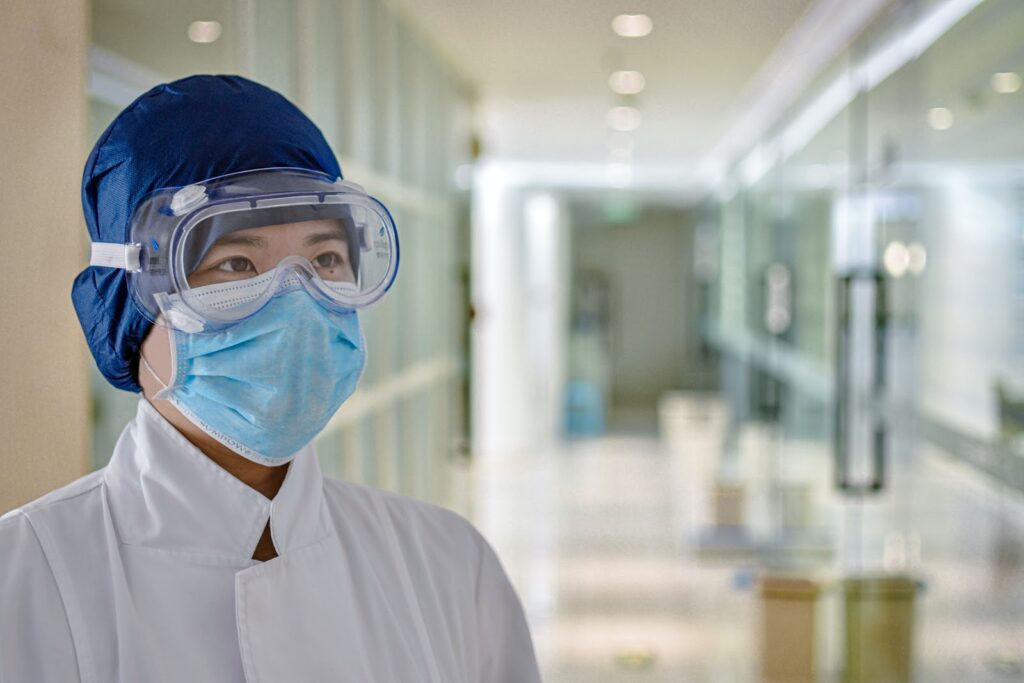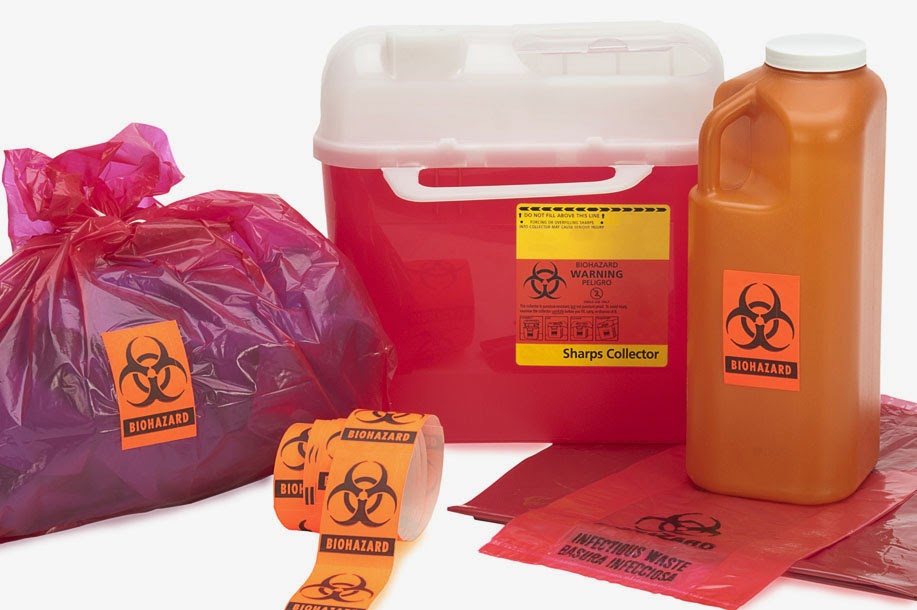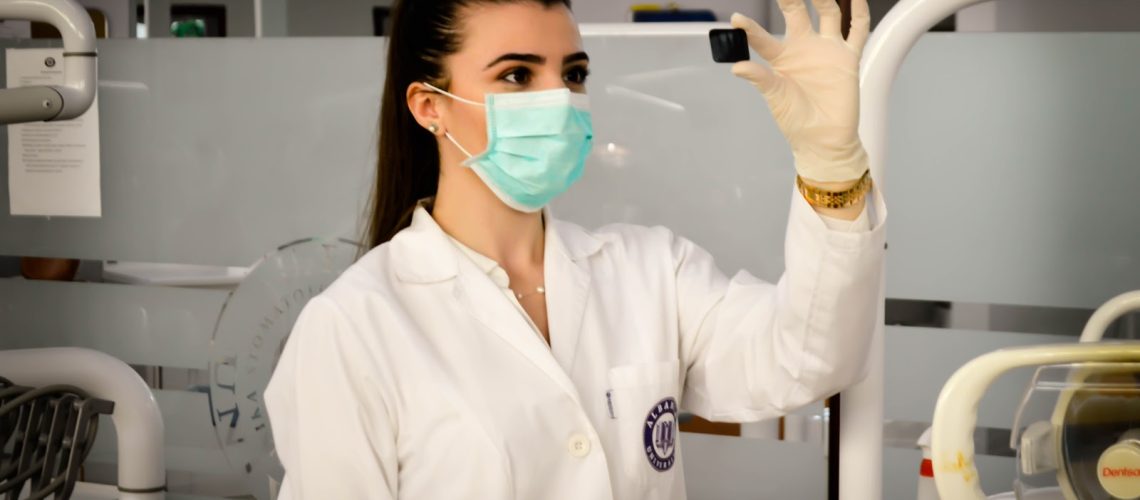Handling biohazardous materials has always been a safety concern for hospitals, emergency rooms, clinics, dentists, nursing homes, and other industries that deal with medical waste. Handling this material is dangerous for workers, since it can carry disease or contagious pathogens.
This is something we aim to eliminate with our Sterilis Solutions System, a device that turns regulated medical waste (RMW) into harmless confetti to be thrown safely in the regular trash.
With the seriously contagious nature of COVID-19, this has become an even more troubling dilemma for hospitals, who are facing more medical waste than ever due to the pandemic. While our device is a game-changing solution, let’s first look at the causes of increased medical waste and how it can be safely handled.
What is Biohazardous Waste?
Biohazardous waste is any waste product that has the risk of carrying bloodborne pathogens. It’s often found in doctor’s offices, public restrooms, and even trash cans in areas you frequent, like schools and parks.
The Fred Hutchinson Cancer Research Center defines biohazardous waste as “any waste containing infectious materials or potentially infectious substances, such as blood.” They go on to name needles, blades, and other waste as potentially dangerous since they can cause injury during handling.
Examples of Biohazardous Waste
All biological materials should be treated as though they carry infectious diseases. That’s one way to protect yourself or your employees from potential danger. Here are some examples of biohazardous waste to always handle with care and caution:
- Human blood and blood products. This also includes items contaminated with blood or things that will release blood in a liquid form when squeezed or broken.
- Human body fluids. This includes semen, vaginal secretions, saliva, urine, and excrement.
- Pathological waste. This means biopsy materials, including human tissue or human body parts, usually from an autopsy, surgery, or other medical procedure.
- Microbiological waste. This could be discarded live and attenuated viruses, along with discarded specimen cultures and culture dishes.
- Sharps waste. This includes sharp objects, including used needles, scalpels, broken glass, and any other object that could be contaminated.
Related: OSHA Bloodborne Pathogen Standards and How to Meet Them
How COVID-19 is Creating More Medical Waste

In New York City alone, there have been 171,000 coronavirus cases within the last few months — most of which have spent time in a hospital. This surge in patients carrying the contagious virus has created an influx of garbage contaminated with bodily fluids and other biohazardous waste, all of which needs to be safely discarded.
In Wuhan, where the novel virus’ origins were traced, they haven’t just been building new hospitals for the incoming patients. They’ve also deployed 46 mobile waste treatment facilities due to hospitals generating six times as much medical waste as before the crisis began. The daily medical waste output is currently at 240 metric tons.
This is a pattern that’s also started to reach the United States. According to the LA Times, if COVID-19 continues to spread at a rapid pace, “networks of hospitals, waste haulers, and treatment centers” would be weighed down by a rapid growth in medical waste. This includes:
- Masks
- Gloves
- Booties
- Bed linens
- Cups
- Plates
- Towels
- Packaging
- Medical equipment
With so many items becoming potentially hazardous to handle, a lot of medical workers may become infected. So how can it be safely dealt with?
Related: A Guide on How to Dispose of Medical Waste
Simple Steps to Properly Dispose of Biohazardous Waste
Biohazardous medical waste is seen as a potential threat to the public. That’s why it can’t just be simply tossed in the trash, especially during a pandemic when a contagious virus is on the loose. Disposable gloves shouldn’t be simply tossed in a trash can and neither should potentially contaminated towels.
Identify the Type of Waste
The first step to ensuring you’re handling biohazardous waste correctly and safely is by identifying the type of waste. The main reason for taking the time to study medical waste is to avoid the extra costs required to sanitize and transport bio-hazardous materials.
To avoid the extra cost, it’s worth taking the time to decide if the waste truly is a cause for concern or can just be thrown into the regular garbage. You should also have a Sterilis Solutions System on hand, since it cuts out the need to sort through waste by turning medical waste into sterile trash, taking away the need for special precautions.
Here are some questions to ask if you’ve yet to secure our device just yet:
- Was the item used to hold blood?
- Is the item saturated or dripping in blood?
- Could the item be infectious?
- Did the item come from a contaminated room?
- Did the item come from a surgical procedure?
If you answered yes to even one of the above questions, you should put the biohazardous waste into the red biohazard bag or sharps container ASAP.
Storing the Biohazardous Waste

After your red biohazard bag is filled up, the dangerous waste must be put into a container ensuring it’s ready for transportation. That’s to comply with local and federal regulations, as well as stopping any potential leaks or spillage.
Each state is different when it comes to their storage requirements, but it’s important to take those guidelines into consideration and follow them closely.
Disposing of the Waste
This is where haulers come in. Haulers are trained professionals paid by companies to safely transfer medical and biohazardous waste properly. Of course, you can save some money and not hire haulers if you use the Sterilis Solutions System.
Instead of handing dangerous material to haulers and paying for it to be sterilized and incinerated, you would simply put the stored biohazardous waste into the device and watch it turn to sterile and safe trash. It can then be handled just like any other trash within your organization, ensuring your employees are safe and that you’re saving money.
Conclusion
Due to the coronavirus pandemic, hospitals and other facilities have seen a rapid increase in patients. This means a major increase in biohazardous materials and medical waste that is potentially dangerous to humans who come into contact with it. But what can be done?
Now more than ever, it’s important to identify potentially hazardous waste to keep employees from coming in contact with COVID-19-contaminated waste and equipment. It should be stored and disposed of correctly, as well.
Looking for a cheaper and safer solution to your facility’s biohazardous waste? Contact us today to find out more about our Sterile Solutions System and how it can keep your organization safe and in compliance with RMW handling guidelines.
- How to Return to Work Safely
 As the year 2020 marched forward, it became evident that COVID-19 would force a lockdown across the U.S., if not across the globe. For seemingly endless months, everyone has had … Read more
As the year 2020 marched forward, it became evident that COVID-19 would force a lockdown across the U.S., if not across the globe. For seemingly endless months, everyone has had … Read more - Steps to Take Following a Needlestick
 It’s not difficult to believe that the healthcare industry is a hazardous industry to work in. Even as the current pandemic has relegated most of the country to their homes, … Read more
It’s not difficult to believe that the healthcare industry is a hazardous industry to work in. Even as the current pandemic has relegated most of the country to their homes, … Read more - What Are Some Examples of Biohazard Waste?
 Table of Contents What are some examples of Biohazard Waste? What is Biohazardous Medical Waste? Primary Categories of Medical Biohazard Waste Disposal of Common Biohazardous Waste If the term “biohazardous … Read more
Table of Contents What are some examples of Biohazard Waste? What is Biohazardous Medical Waste? Primary Categories of Medical Biohazard Waste Disposal of Common Biohazardous Waste If the term “biohazardous … Read more
